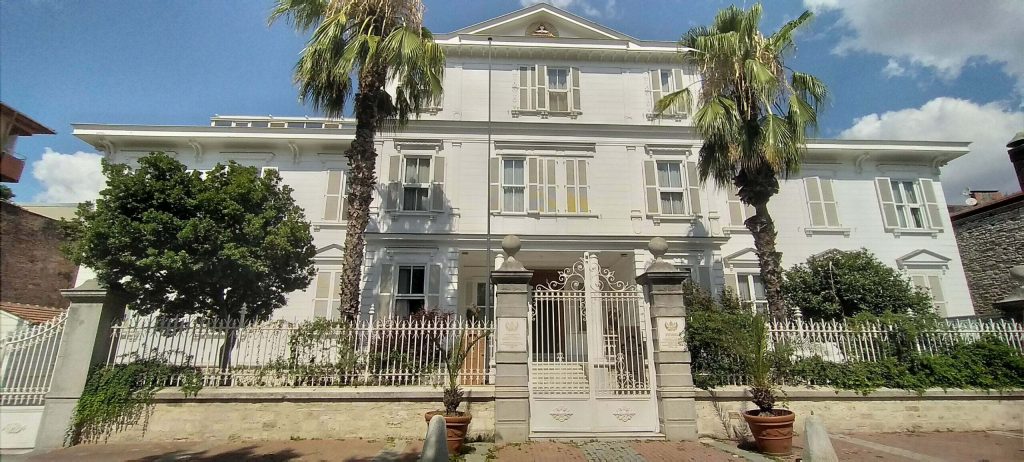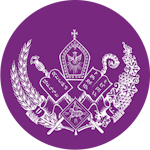“The Lord is my shepherd, I lack nothing. He makes me lie down in green pastures, he leads me beside quiet waters.” (Ps.23:1-2)

HISTORY
ISTANBUL ARMENIAN COMMUNITY AND PATRIARCHATE
During the Byzantine Empire, in the 5th century, it is known that a small Armenian Community of Istanbul existed, consisting of the students of Holy Translators. From that date on, there has always been an Armenian community in Istanbul. However, until the conquest by the Ottomans, the Armenians could not have their own church in this city. The Armenians of Istanbul had to worship within the Byzantine Church. With the conquest of Istanbul by Sultan Mehmet II in 1453, a new period of religious freedom began in the history of the Armenian community of Istanbul. Armenians could now worship freely in their own churches, according to their own rituals. The conquered city began to accept Armenians migrating from various regions of Anatolia. Thus, the Armenian population in the city increased rapidly. In the newly established neighborhoods, churches began to be opened by benefactors or the community.
After the conquest, Sultan II. Mehmet invited Hovagim, the Bishop of Bursa Armenians, to Istanbul in 1461, recognizing him as the Armenian Patriarch and the spiritual leader of the Christian subjects of the Eastern Orthodox sect of the Ottoman Empire, and endowed him with rights and authorities equivalent to those of the Greek Patriarch.
The Patriarchate was first established in a Byzantine Monastery in Samatya. From Patriarch Hovagim to Areveltzi (Eastern) Tavit I, exactly 20 patriarchs served in Samatya. In 1641, Patriarch Tavit I transferred the patriarchate to Kumkapı. Since that date, the Patriarchate has served as the spiritual center of the Armenians of Türkiye in the same place in Kumkapı.
In 1718, during the reign of Patriarch Hovhannes IX (Golod) of Bitlis, both the Patriarchate and the Patriarchal Church were reduced to ashes in a huge fire that lasted twenty-four hours, and were quickly rebuilt. The complex, which was destroyed by another fire in 1820, was rebuilt by Architect Hovhannes Serveryan. Six years later, in 1826, a new fire reduced the Patriarchate to ashes once again, and this time the building and complex were built by Imperial Architect Krikor Amira Balyan and Garabed Amira Dövletyan. The Patriarchate building was last rebuilt in 1913, during the reign of Patriarch Hovhannes XII (Arşaruni), under the architect Krikor Melidosyan.
The current building was damaged in the Marmara earthquake (August 17, 1999) after serving for nearly 90 years. The application for permission to rebuild in the same style was rejected. In this case, the only solution was to repair it. After a three and a half year long major repair, the Patriarchate and its complex underwent a radical renovation. His Holiness the Patriarch and the secretariat moved into the Patriarchate in the autumn of 2004.
Before World War I, the Patriarchate’s spiritual jurisdiction extended from Eastern Anatolia to North Africa, from Thrace to Europe and to the newly established Armenian communities in the USA.
The Armenian Patriarchate of Istanbul is one of the four offices in the Armenian Church hierarchy. Today, the Patriarchate, which is the spiritual center of our communities in Turkey and the island of Crete, is also spiritually connected to the Diaspora Armenians whose origins are from Anatolia.
Today, members of the congregation who elect the Church Boards of Directors play an active role in the continuation of the existence of the churches. We can say that the income from the real estate donated by the members of the congregation is added to the donations of the believers and the expenses of the churches are covered by the members of the congregation.
Patriarch Mesrob II. His Holiness (Mutafyan), who was elected to this position on November 20, 1998, was the 84th Patriarch of the Patriarchal See of the Armenians of Türkiye and passed away on Friday, March 08, 2019.
His Holiness Patriarch Sahak II (Mashalyan), who was elected as Patriarch on December 11, 2019, ascended to the throne on Saturday, January 11, 2020, and received the Patriarchal Staff, becoming the 85th Patriarch of the Armenian Patriarchate of Turkey.
